If you’re looking for tips for keeping little ones entertained while you homeschool, rest easy that there are ways to have a seamless start to the school year.
Pair these homeschooling tips up with these FREE Homeschool Planning Pages to get prepped and organized for the year.
This time of year is always exciting, isn’t it? As we wrap up our summer vacations, squeezing in as much fun as possible, and then set our sights on a year full of learning. However, it is also a time of transition – and transitions can be a bit challenging.
Right now, many of my friends are dealing with a specific type of transition: homeschooling with babies and toddlers.
Even if you’ve been homeschooling for years, adding a new baby or a demanding toddler to the mix can make things a bit more complicated. So, today, I want to share some of my favorite tips for keeping babies and toddlers entertained while you homeschool (aside from babywearing, which is always an option).
Tips for Keeping Little Ones Entertained While You Homeschool
These tips can be a great way to balance teaching at home while also entertaining the younger children as well.
Tip #1: Be Realistic
If you’ve been homeschooling for a while (or even if this is your first year, but you’ve worked hard on creating a schedule), chances are that your schedule is going to get thrown out the window sometimes. There will be days when you have to make minor adjustments as well as days when it won’t even be worth trying to salvage your plans.
Rather than expect things to go perfectly according to plan, go into the day knowing that not everything is within your control. It’s great to have a to-do list to keep you on track. It’s smart to have goals for how to spend your time. But accept the idea that you won’t always get everything done – and that’s ok.
Keep your eye on the big picture – enjoying your children and having fun learning new things.
Tip #2: Keep it Simple
When making plans and setting routines, remember to keep them as simple as possible. Life can be complicated enough without creating complicated plans to follow. Create a routine and daily plans that have a natural flow and that make sense for what you need to get done.
For example, in the morning, it makes sense to head to the bathroom first so everyone can have “potty time” and diaper changes. Then you can wash hands and enjoy breakfast together before taking baths to rinse off any remnants of your meal. Then it’s time to brush teeth and get dressed for the day.
Repeat this every morning and your kids will know that the order of events is:
- Potty time
- Time to eat
- Brush your teeth
- Let’s get dressed
Tip #3: Infuse Family Time with Lessons
Whenever possible, combine lessons with family time. For example, if your 2nd grader needs to do 20 minutes of independent reading, encourage him or her to read to your younger children. Now you’ve turned reading practice into story time.
If your kindergartner needs to practice counting skills, you can whip out a board game that requires counting spaces/items, but that is still playable by your younger kids.
You can also use times like this to squeeze in household work you need to do, such as preparing a meal or doing some light cleaning.
Tip #4: Plan Toddler Versions of Your Lessons
If your toddler seems eager to do what their big brothers/sisters are doing, then make an effort to create toddler versions of your lessons so that they can join in. This may not always be possible, but there are often ways to get even little kids involved in subjects. After all, much of what we are learning in school is an extension of things we have already been exposed to.
If you’re doing a math lesson, have some fun manipulatives available for your child to count. If you have a preschooler, print out some easy dot to dots for them to do at the table while you’re doing math with older children.
If you’re working on spelling, have some illustrated flashcards on hand so your baby or toddler can work on building their vocabulary.
Having independent reading time? Make sure you have some board books on hand for your toddler to peruse. Essentially, as often as possible, find some small way for your toddler to get involved with what you are doing.
It doesn’t have to be anything big that requires a lot of assistance – just something to make him or her feel like she’s part of what’s going on.
Tip #5: Have a Busy Bag Ready
Another thing you should always have ready during school time is a busy bag. This is something that is filled with a bunch of things that will keep your little ones occupied (and safe) while you are busy working with your older children. What you put in your busy bag will depend on your child, however, some suggestions are:
- Board books
- Creative toys like puppets and felt board with felt characters
- Blocks and other building tools
- Art materials such as crayons and paper
- Fine motor activities like stringing beads, puzzles, and playdough
- DVDs that you can pop into the DVD player for them to watch
Note: Busy bags work best if they are limited to certain times. If they are things your child can play with at any time, it won’t be as special when you try to get them to play with them during school time.
Tip 5: Ask for Help
My final tip: ask for help when you need it. If your partner is home during your homeschool hours, ask him or her to watch the little ones while you work with the older kids. Or vice versa – whatever works for you guys.
If you can afford to hire a mommy helper or nanny to keep the younger kids entertained for a few hours a day, that’s also a great option.
I hope this helps make your homeschooling days run a bit more smoothly. If you have any other ideas for how our fellow homeschool moms can get things done with babies and toddlers at home, please feel free to share!


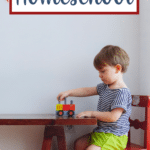

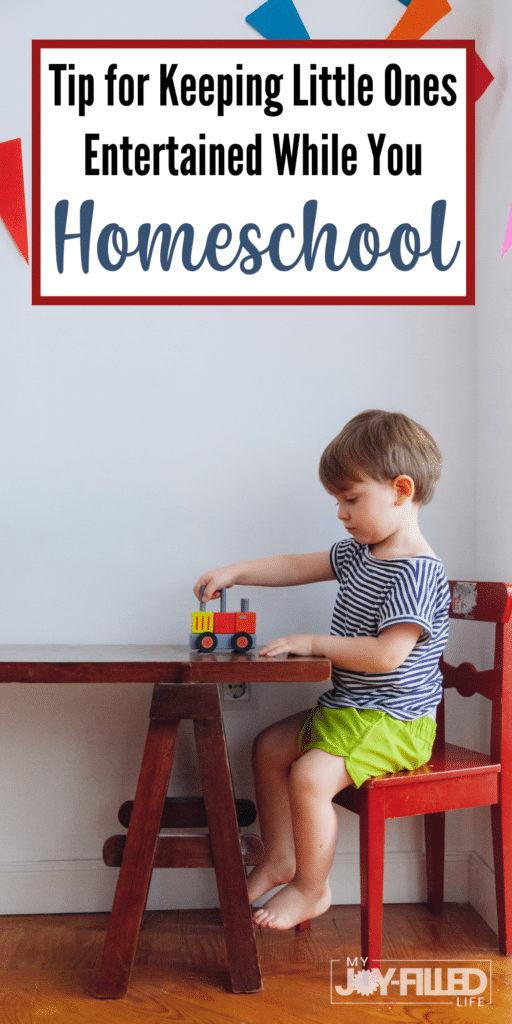

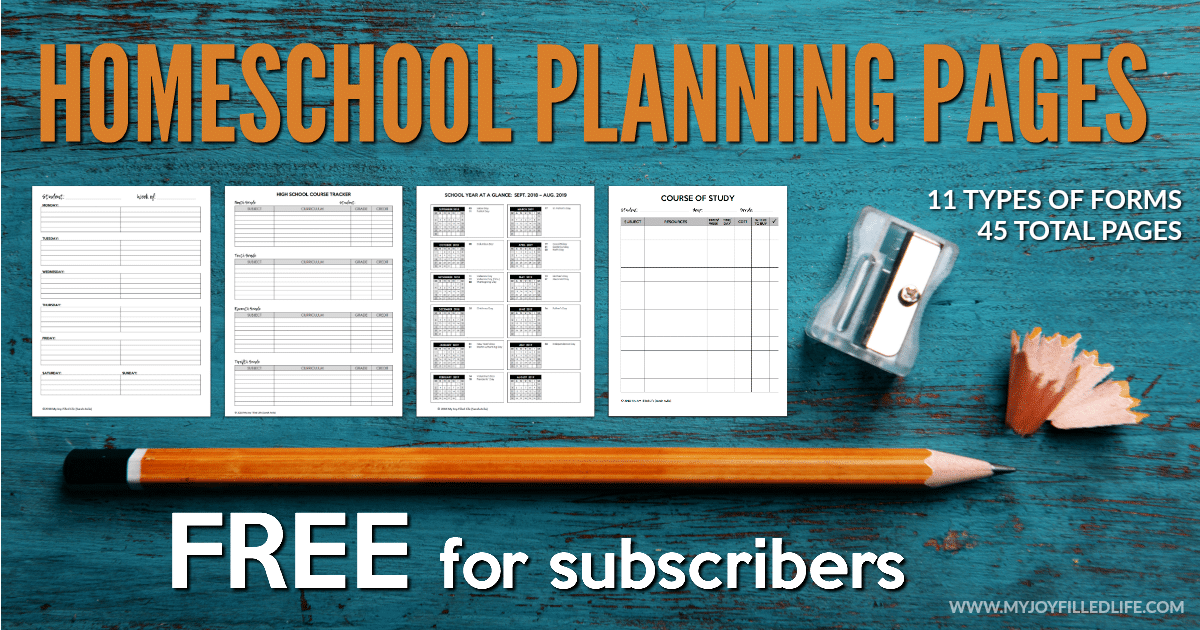
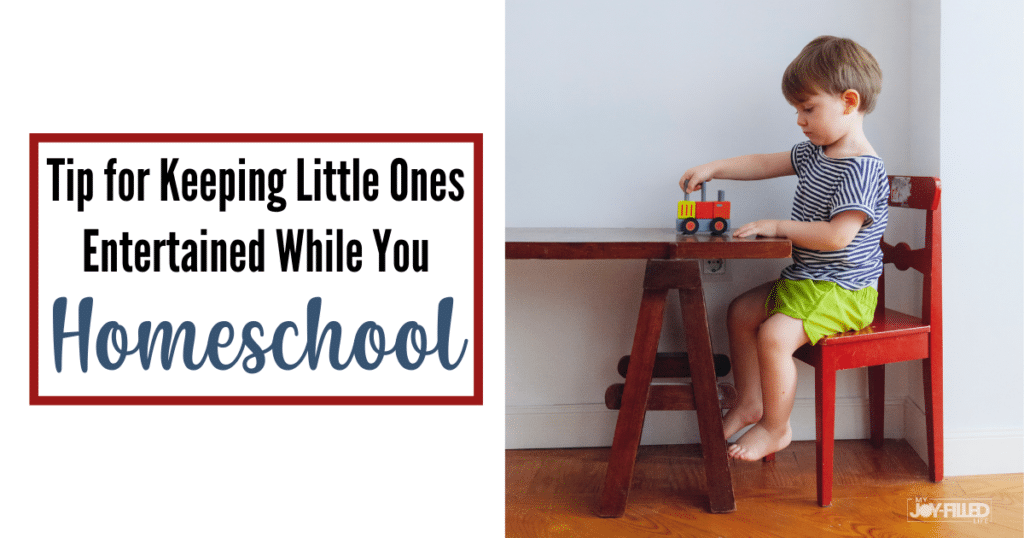
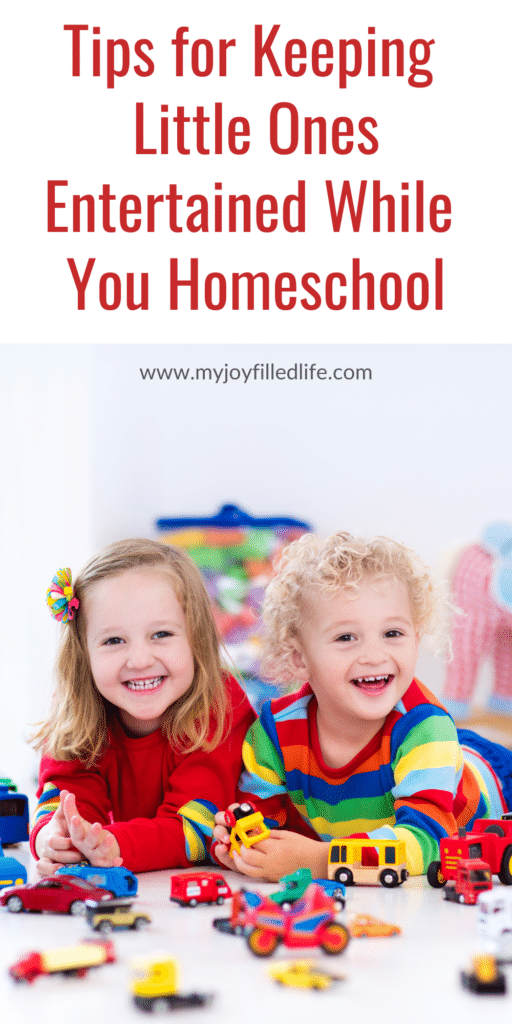

Leave a Reply